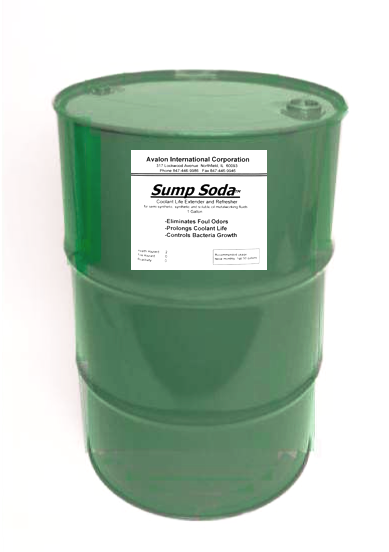Bug Check® FC and AB
Bug Check® FC Bug Check® AB
Microbial Tests for hydrocarbon-based fluids, such as diesel, gasoline, hydraulic fluids and similar low-water-content or water-contaminated fluids.
Bug Check® offers two choices Bug Check® FC and Bug Check® AB. Bug Check® FC checks for both bacteria and fungi/mold. Bug Check® AB checks for bacteria only.
Even hydrocarbon based-fluids are susceptible to microbial contamination. It only takes a trace amount of water for bugs to grow. Even condensation on tanks walls is enough. Bugs (bacteria, fungi, algae, yeast and mold) grow in diesel fuel, gasoline, solvents and other similar low-water-content fluids. The use of Bug Check® FC and AB is a simple, easy and scientific way to determine microbial contamination levels.
Find out if your bugs are blooming before it’s too late. Bugs eat the complex organic molecules that make up hydrocarbon-based fluids and they are fast! Bacteria can grow (or “bloom”) at phenomenal speed - cells can divide every 20 minutes. At that rate, one "bug" will grow into 16 million cells in just 8 hours. The resulting high levels of contamination lead to fluid spoilage.
Microbial contamination in hydrocarbon-based fluids such as fuels and hydraulic fluids is difficult to detect without an appropriate microbial test kit. It causes significant and expensive operational problems including the bio-degradation of valuable fluid as well as microbial influenced corrosion, filter plugging, and sludge formation.
Bug Check® FC and AB are microbial test kits that are specifically designed for determining bacterial and fungal contamination levels in distillate fuels and similar low-water-content fluids. Bug Check® FC and AB are accurate and consistent bacteria test kits that make counting both total bacteria and total fungi simple and easy.
Capture the convenience, security and power of getting results in hours versus the many days required when sending samples out. Find out for yourself on your site, what really is going on in your fuel by using Bug Check® FC and or AB.You do not have to be a microbiologist to use Bug Check® FC or Bug Check® AB.
Bug Check® is a non-hazardous microbiological culture media. No hazard class label is required. 40 tests per box.
Place order here: Bug Check® FC Bug Check® AB
Brochure links:
Bug Check® FC Directions Bug Check® FC Conversion Chart FC SDS
Bug Check® AB Directions Bug Check® AB Conversion Chart AB SDS
Dosing Tips:
Bacteria in water-based fluids lowers pH over time, leading to odor, corrosion, and shortened fluid life. Sump Soda kills the bacteria and boosts pH, helping fluids stay cleaner, fresher, and longer-lasting while protecting equipment and part finish.
For most systems, add 1 quart per 50 gallons of coolant or process water. Actual dosage needs will vary with bacterial load — heavily contaminated systems may require additional treatment to bring pH back into range.
Aluminum and other sensitive alloys benefit from a gentler approach: start with ½ quart per 50 gallons, adding in smaller portions spaced about an hour apart. This gradual pH rise keeps levels under 10, minimizing surface staining risk while still delivering all the benefits of Sump Soda.
How Do I Determine When My Coolant is No Longer Safe?
The following signs indicate that a coolant is no longer safe to use and might be hazardous to workers health:
- Foul smell. Uncontrolled microbial growth causes metal working fluid to stink. It is important to address the cause of rancid smells, as the fine spray that is created during machining contains live microbes which can cause harmful health effects (dermatitis) in the employees who are exposed to this coolant mist. Foul smelling fluid is likely caused by microbial growth and needs to be analyzed and treated with biocide. Coolant that cannot be saved should be discarded appropriately. Before adding fresh coolant, the sump needs to be thoroughly cleaned.
- Abnormal fluid appearance. Check the color and appearance of the fluid regularly. Usually, synthetic fluids are clear, often the semi-synthetics appear transparent to milky, and soluble oil typically has a milky appearance with no oil layer. Bacteria often cause coolants to turn grey or black. Tramp oil may cause yellowing and browning of coolants. Colorless coolant is a sign of depleted coolant.
- Employees suffer from respiratory irritation. Exposure to coolant mist that is contaminated by bacteria and fungal spores can lead to irritation and tightness in the chest.
- Employees suffer from dermatitis skin symptoms from working with metalworking fluid, a persistent itchy rash that lasts six months or more.
Stop the Stink with Sump Soda®
This coolant deodorizer is compatible with all major metalworking fluids: Castrol, DA Stuart, Fuchs, ChemTool, Quaker Houghton, Master, AW Chesterton, DoAll, ITW Fluids, Milacron, Hangsterfer's & others.
Comparative active ingredient toTriadine™ and Triazine.
Sump Soda® is a bacteria killer.
-
Sump Soda® - 1 gallon jug; Use 1 qt/50 gal of coolant
Regular price $ 151.00Regular price -
Sump Soda® - 5 gallon pail; Use 1 qt/50 gal of coolant
Regular price $ 525.00Regular price -
Sump Soda® - 55 gallon drum; Use 1 qt/50 gal of coolant
Regular price $ 3,950.00Regular price





